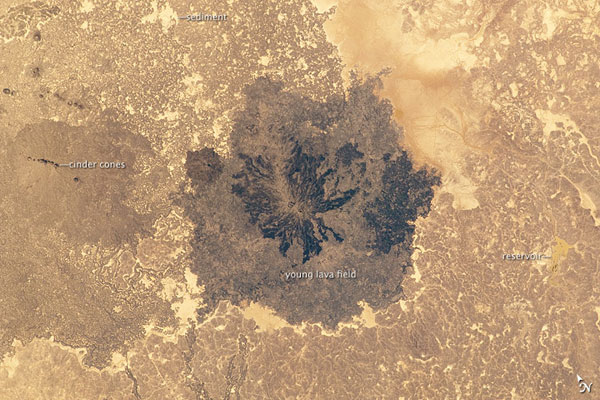
Arabia's Largest Volcano Field

Es Safa is a striking basaltic volcanic field located to the southeast of Damascus, Syria, seen in an image released today. It lies within the larger Harrat Ash Shamah the largest volcanic field on the Arabian tectonic plate .
Harrat Ash Shamah parallels the Red Sea and extends from northeastern Israel, through southern Syria and Jordan, and into Saudi Arabia, covering an area of over 19,000 300 square miles (50,000 square kilometers).
Es Safa contains numerous vents that were active during the Holocene Epoch, which began around 12,000 years ago. The most recent recorded activity was a boiling lava lake observed in the area around 1850. The dark lava flow field, which can be seen in the center of this image, is likely the latest activity of the volcanic field. The older flow surfaces have light tan sediment accumulating in shallow depressions, in contrast to the relatively pristine surfaces of the darker, younger flows.
There are at least 38 cinder cones are scattered throughout the Es Safa field. Many are aligned along northwest-southeast trends that indicate faults through which magma rose to the surface. Cinder cones are steep conical hill of volcanic fragments that accumulate around and downwind from a volcanic vent.
Sign up for the Live Science daily newsletter now
Get the world’s most fascinating discoveries delivered straight to your inbox.










